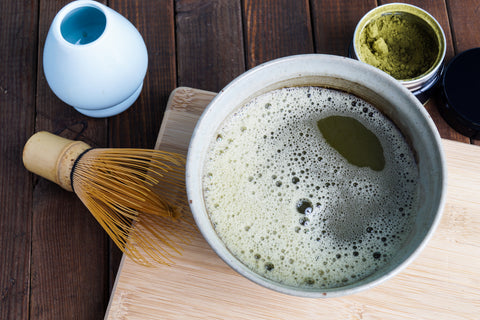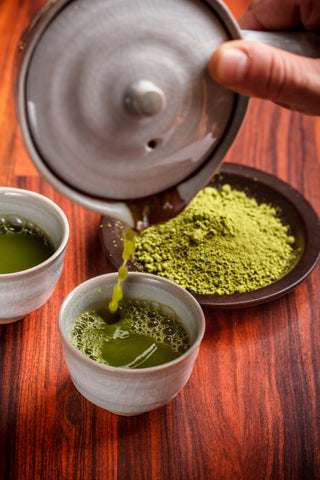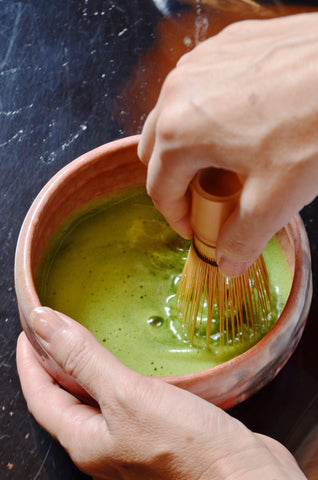

Matcha tends to be really frothy when sifted. So, are you doing it wrong?
The ideal water temperature for making matcha tea is 80 °C (176 °F), and even though it’s absolutely fine to use hotter water, it’s never recommended to use cooler water.
Otherwise, the end result will be lumpy and less frothy.
Unlike loose leaf green teas, matcha doesn’t become bitter when high temperature water is used to brew it.
But since very hot matcha is extremely difficult and uncomfortable to drink, make sure to use water that’s not too hot.
(Want to give your body the benefits of the best green tea in the world? Simply click the link below.)

Are you using too much matcha and too little water? Or too much water and too little matcha? Figure it out as the frothiness depends on it.
If it’s your first time in making matcha, make sure to read our matcha preparation guide before going ahead.
If you don’t have the right tools to make matcha, here’s a guide to make matcha using alternative tools.
Just make sure to use only about 2 grams of matcha. The tea is quite potent, you don’t have to fill the whole bowl/cup with it.
Use only 60 to 70 ml (2 to 2.3 oz) of water if you are using a traditional matcha bowl (chawan). It’s not recommended to use other bowls for first-time matcha whisking because you wouldn’t know how much water to use.

The thing with frothy matcha is that it must be whisked well. You have to whisk vigorously to ensure that it’s nice and frothy.
But if it’s the first time you are whisking matcha, don’t expect it to be very frothy. Like all other things in life, it takes practice to whisk matcha tea really well.
Do you know why the matcha bowls are so spacious? That’s because they allow the room to move the whisk around in a way that doesn’t spill the matcha.
If you are fine with less-frothy matcha, you can keep it that way. But once in a while, it feels nice to drink a bowl of really really frothy matcha tea.


Comments will be approved before showing up.